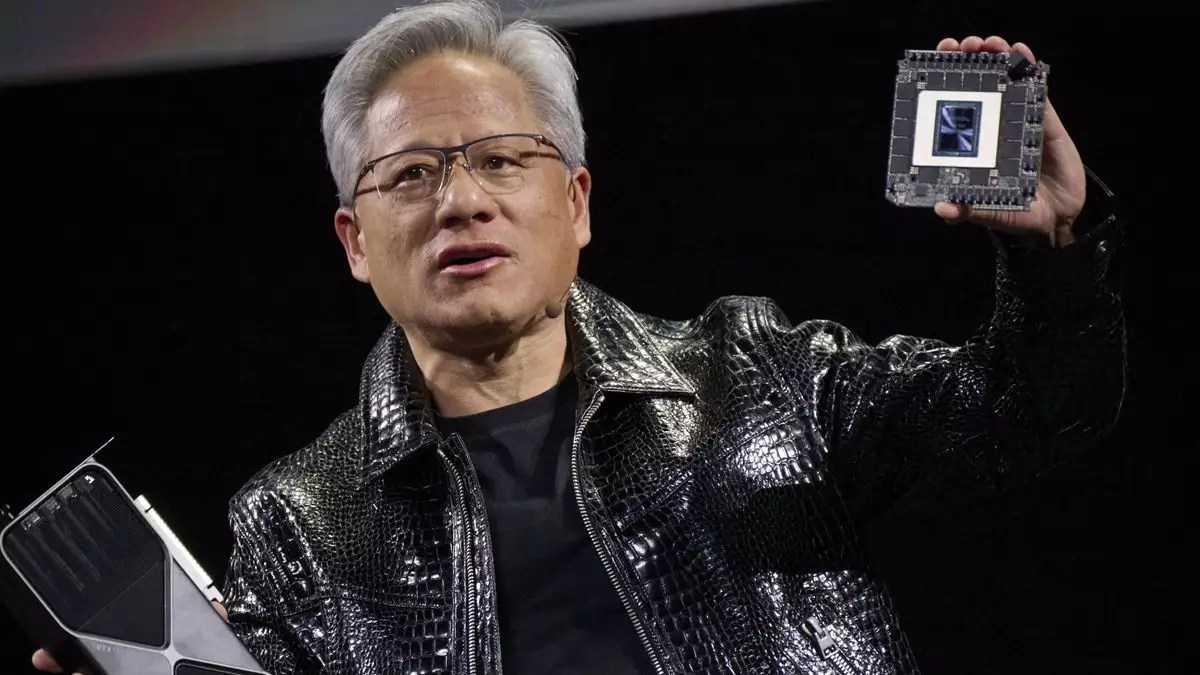Nvidia has long been a leading name in the graphics processing unit (GPU) market, especially within the realm of artificial intelligence (AI) and high-performance gaming. However, recent reports have stirred concern among stakeholders regarding the potential overheating issues of the new Blackwell series of GPUs, which have affected major clients such as Microsoft, Amazon, Google, and Meta. This introspection into Nvidia’s latest technology raises questions not only about the performance of the Blackwell architecture but also its implications for the upcoming RTX 50 gaming GPUs.
High-profile clients have reportedly begun to reconsider their orders for Nvidia’s Blackwell GPUs, citing significant overheating problems. The Information, a tech reporting outlet, notes that these overheating issues, in conjunction with other glitches, have prompted some firms to postpone their orders or revert to the prior ‘Hopper’ generation of NVIDIA’s AI-optimized GPUs. The challenges have been underscored by statements from Nvidia’s CEO Jensen Huang, who openly admitted in October that Blackwell GPUs exhibited “design flaws” resulting in shipping delays for crucial AI racks. Although Huang did not specifically mention overheating issues, the term “design flaws” multiplied concerns regarding the reliability and consistency of the Blackwell series.
The Complexity of GPU Design
The GPU landscape is intricate, with the design of chips being dependent on multiple factors including yield performance—the ability to produce functional chips from a semiconductor wafer. Low yield typically signals that a significant number of produced chips are not operable, a problem that Nvidia is facing with its Blackwell series. While these issues have been in the conversation since the previous November, the extent of their severity remains to be fully evaluated. Interestingly, it has also come to light that Nvidia has undertaken several redesigns of liquid-cooled racks that house numerous Blackwell GPUs, indicating a continuous struggle to effectively manage heat dissipation within these units.
Despite these challenges, it is crucial to differentiate between the specialized AI focus of the Blackwell GPUs and the gaming-oriented RTX 50 family. While they share the same Blackwell architecture and the TSMC N4 silicon foundation, their operational workloads and functional units are significantly different. The distinction suggests that problems originating in AI-centric GPUs may not necessarily extrapolate to gaming GPUs.
The impending launch of Nvidia’s RTX 50 gaming GPUs, while built on the same architecture as the Blackwell series, brings a different set of expectations and requirements. These gaming chips are designed specifically to cater to the demands of video game rendering and optimization, which diverge considerably from the computational tasks tied to AI workloads. Such differences may mitigate any shared design flaws or overheating issues between the two families of products. Nvidia’s robust experience and innovative capabilities in gaming also mean that the gaming division may possess additional safety nets to ameliorate potential design flaws.
The overheating narrative has primarily stemmed from The Information, insisting on the need for further corroboration. While it is often routine in tech reporting to hypothesize potential problems based on scant details, more sources would be beneficial to confirm widespread issues. For investors and end-users alike, transparency in these matters is critical. Reliable insights into the long-term viability and performance of Nvidia’s products will retain customer trust and encourage adoption of their next-generation GPUs.
As Nvidia prepares to launch the RTX 50 gaming GPUs amid the ongoing uncertainties surrounding the Blackwell architecture, the company faces both challenges and opportunities. The heat issues currently associated with Blackwell GPUs may not signal the doom of their upcoming gaming counterparts, but a heightened awareness and proactive approach to design integrity will be instrumental. Moving forward, Nvidia must communicate effectively with its user base about the measures taken to rectify existing flaws, ensuring both investors and gamers can place confidence in its acclaimed technologies. The industry will be watching closely as the RTX 50 series hits the market, ready to evaluate whether Nvidia’s legacy of excellence and innovation can withstand the heat of scrutiny.


Leave a Reply